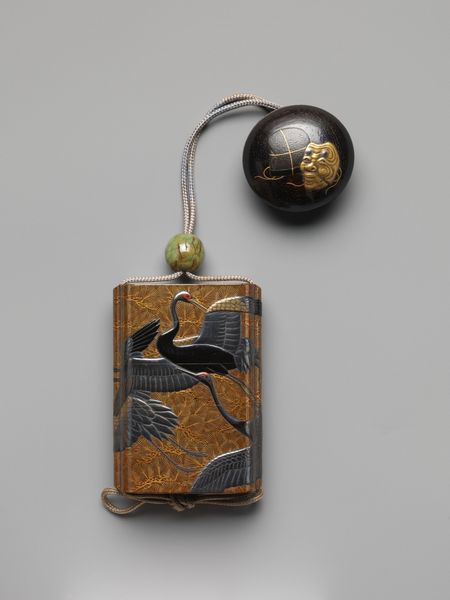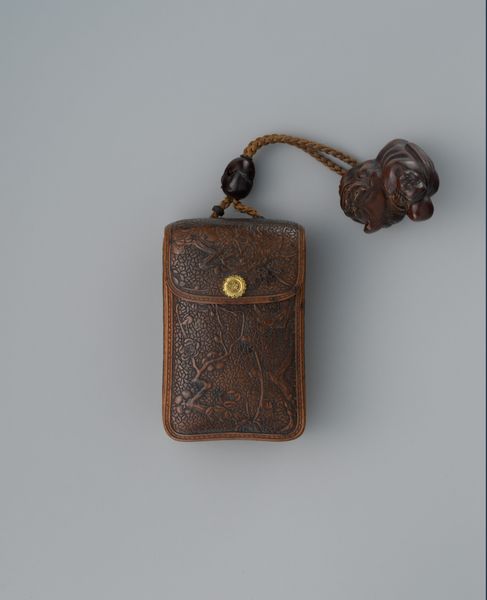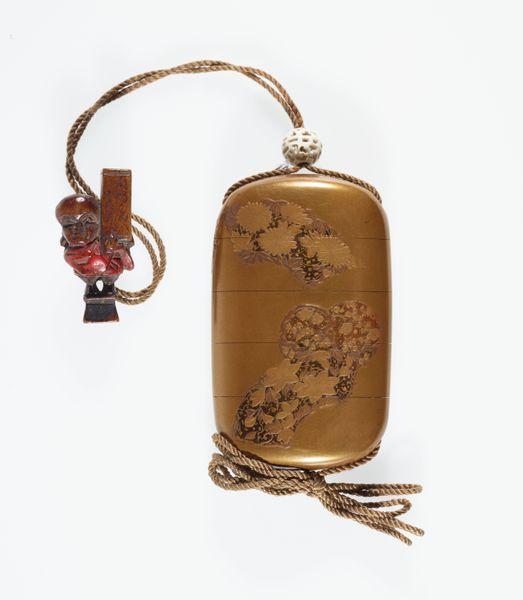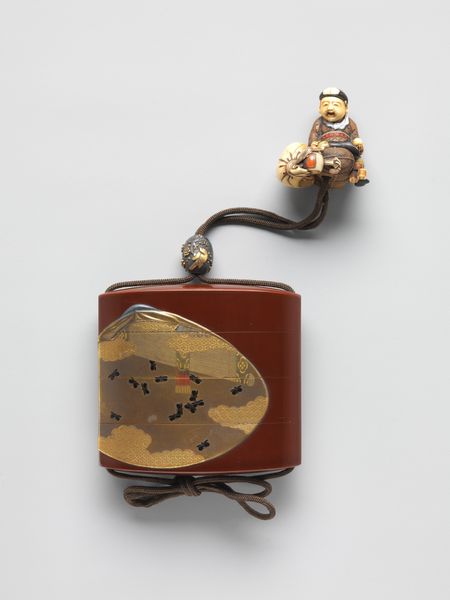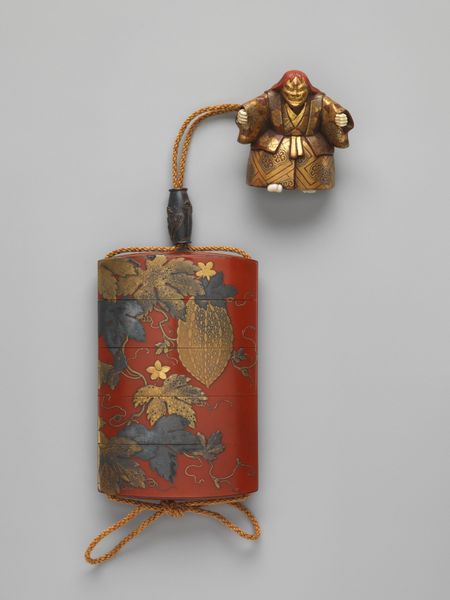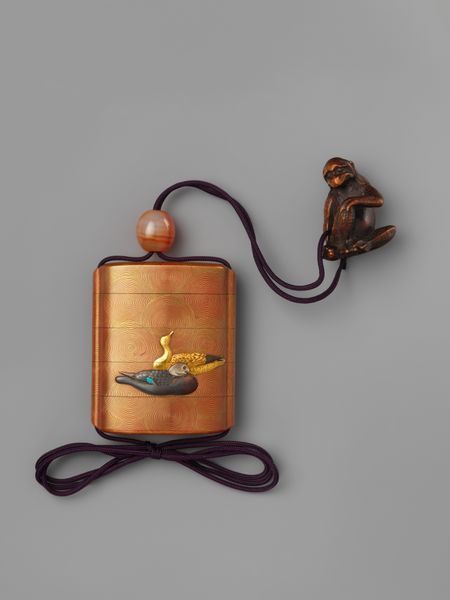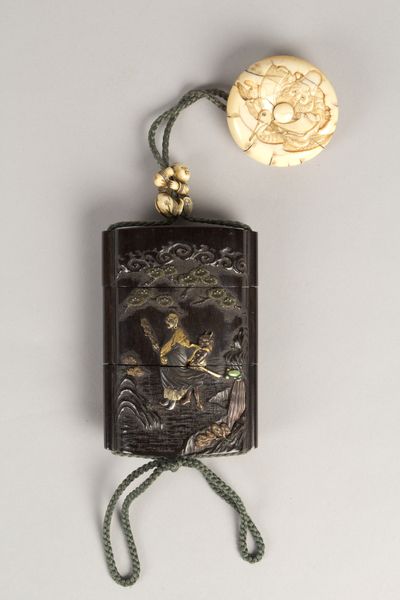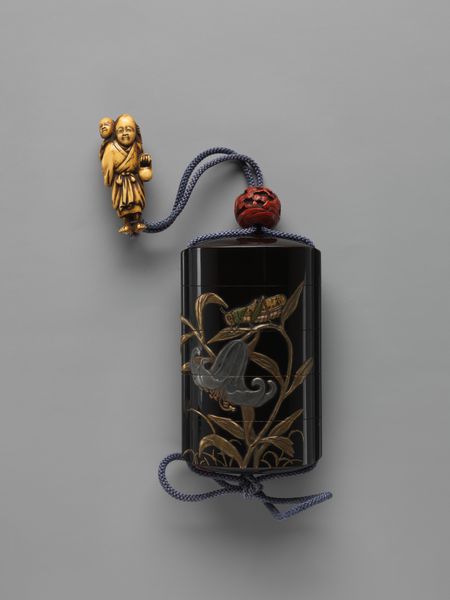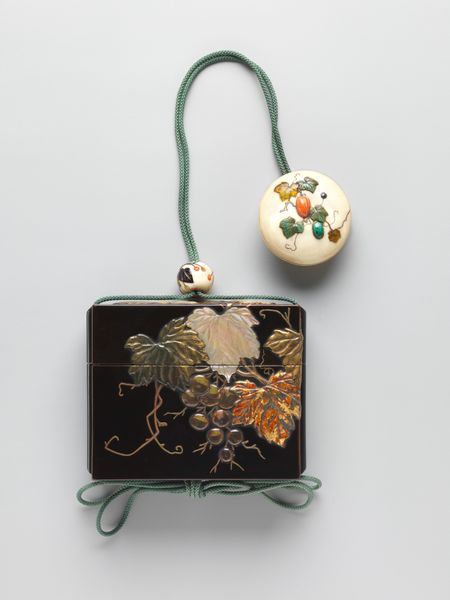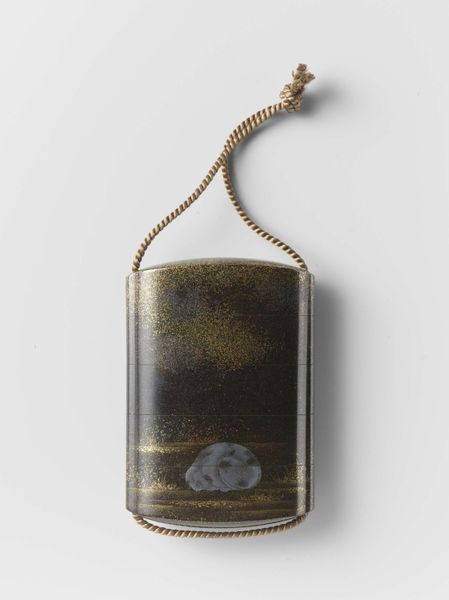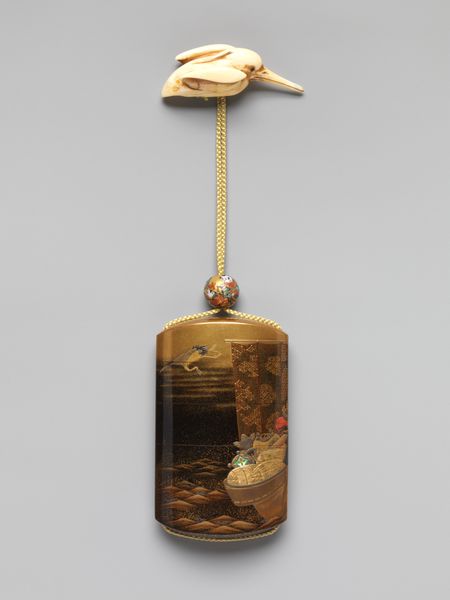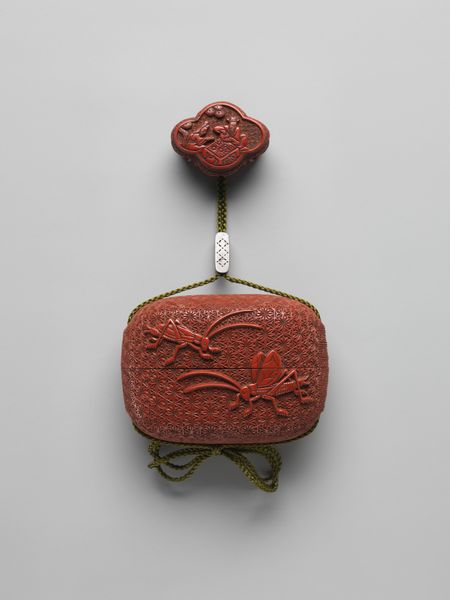
#
asian-art
#
bird
#
japan
#
plant
Dimensions: Overall (inro): H. 3 11/16 in. (9.3 cm); W. 2 3/16 in. (5.6 cm); D. 13/16 in. (2.1 cm)
Copyright: Public Domain
Curator: So, tell me what you think about this inrō. Editor: This is the Inrō with Sparrows in Snow-covered Nandina, created sometime between 1800 and 1833 by Hara Yōyūsai. It looks to be made of gold, and I’m struck by its delicacy, its miniature scale, and also its narrative quality. What story do you think it's trying to tell, or better yet, what kind of larger themes might be at play? Curator: That's a fantastic way to frame it. Beyond its exquisite craftsmanship, I wonder how it reflects social mobility. Inrō were these tiny, functional objects initially worn by samurai to carry seals or medicine, weren’t they? But as the merchant class gained prominence in Japan, the inrō, adorned with intricate designs, became symbols of status. What does this transformation suggest about the changing social and political landscapes of the Edo period? Editor: It’s fascinating to think about how everyday objects can embody such powerful social shifts. This inrō depicts nature so elegantly, I’m also wondering about the rising interest in naturalism? Curator: Exactly. The choice of sparrows and nandina isn't accidental either. Birds often symbolize freedom, transition, but how do you see nandina fitting into this iconography? Do you find it to be a rather ironic motif, even an assertion? Editor: I can definitely see that interpretation. If it wasn't for its beauty and precision I wouldn't have made that interpretation. Curator: Inrō allows for this multi-layered experience. It truly shows the fusion of art, class, and nature, and it gives a potent commentary on societal values and changes. Editor: Absolutely, considering it's just a tiny ornamental piece; it really gives us insight on history itself!
Comments
No comments
Be the first to comment and join the conversation on the ultimate creative platform.
